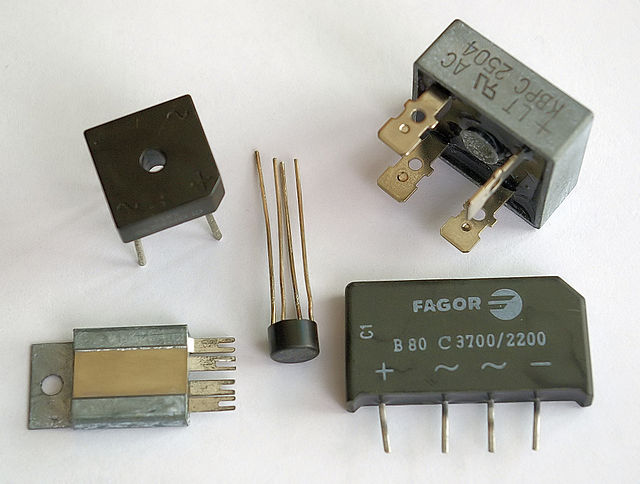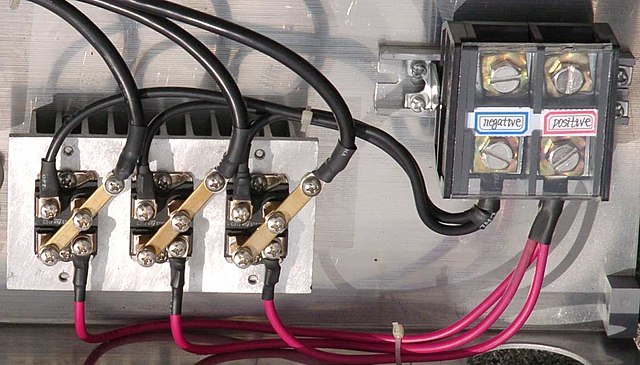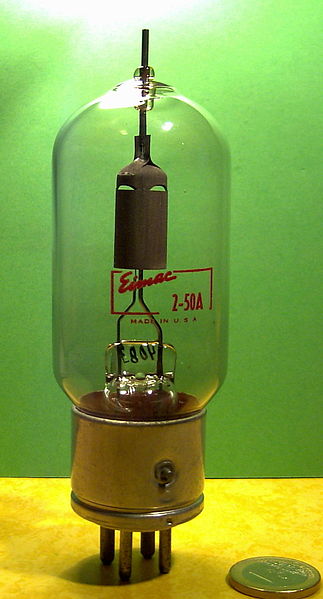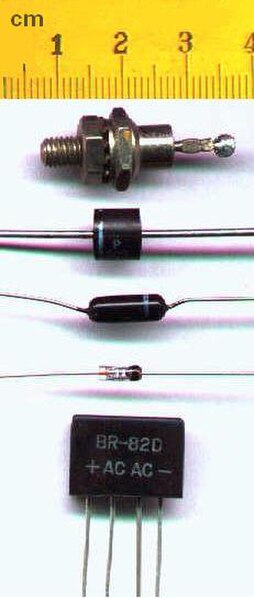A diode bridge is a bridge rectifier circuit of four diodes that is used in the process of converting alternating current (AC) from the input terminals to direct current on the output terminals. Its function is to convert the negative voltage portions of the AC waveform to positive voltage, after which a low-pass filter can be used to smooth the result into DC.
Diode bridge in various packages
A hand-made diode bridge. The silver band on the diodes indicates the cathode side of the diode.
Three-phase bridge rectifier for a wind turbine
A diode is a two-terminal electronic component that conducts current primarily in one direction. It has low resistance in one direction and high resistance in the other.
Close-up view of a silicon diode. The anode is on the right side; the cathode is on the left side (where it is marked with a black band). The square silicon crystal can be seen between the two leads.
A high power vacuum diode used in radio equipment as a rectifier.
Various semiconductor diodes. Bottom: A bridge rectifier. In most diodes, a white or black painted band identifies the cathode into which electrons will flow when the diode is conducting. Electron flow is the reverse of conventional current flow.
A vacuum tube containing two power diodes







